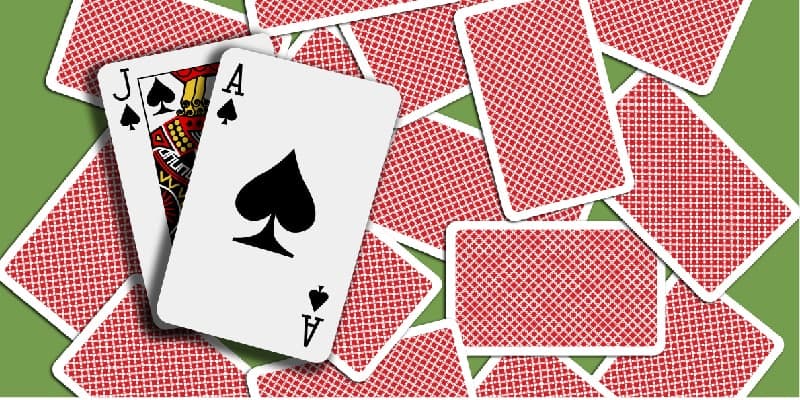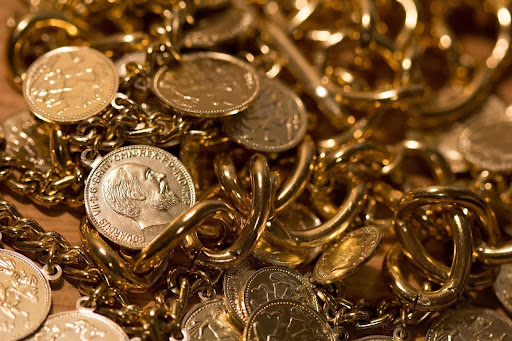Rules of Blackjack Explained: Everything You Need to Know for Success
Blackjack is one of the most popular card games in casinos, with the main goal is to beat the dealer without going over 21 points. At first glance, this game might seem pretty simple. But to really succeed, you've got to know not just the basic rules of Blackjack but also those unspoken ones.
In this guide, I'll start with the official Blackjack rules, then some unwritten etiquette. Once you get these down, playing feels a lot more natural, and you’ll feel more confident making quick decisions. Now, dive into this guide and learn about this game!
Basic Rules of Blackjack
In this game, you and the dealer each receive two cards, and your job is to decide whether to "hit" (take another card) or "stand" (keep your current hand).
First, you need to understand the card value to score your hand.
Card Values
Blackjack uses a 52-card standard deck, and each card has a value as follows:
- Number cards (2-10): These cards hold the same value as the number shown on them. So, a 5 is worth 5 points, a 7 is worth 7 points, and so on.
- Face cards (Jack, Queen, King): Each face card is worth 10 points.
- Ace: This card is versatile, worth either 1 or 11 points, depending on your hand. For example, if you’re dealt an Ace and a 7, the hand total could be 8 (counting the Ace as 1) or 18 (counting the Ace as 11). You can choose to treat the Ace as 11 to make your hand 18, which is a stronger position.
If you want to learn more about Blackjack card value, read this guide!
Each card in Blackjack has a value
Blackjack Gameplay
Step 1: Placing bets:
First up, you select the chip size you want and place it in the betting area before the cards are dealt. The game begins once everyone has placed their bets.
Stetp 2: How to deal Blackjack:
Once bets are in, the dealer will give each player two cards, usually face-up so everyone can see. The dealer gets two cards too, but one of theirs will stay face-down (that’s the “hole card”) while the other one’s face-up for all to see.
Step 3: After receiving 2 cards, you have these options:
- Hit if you want another card to try to boost your total.
- Stand if you like your hand and don’t want more cards.
- Double down when you have a strong hand,
- Split if you’re dealt two of the same card.
In this game, the dealer must follow strict Blackjack casino rules when playing their hand. Generally, they must keep hitting until reaching a hand value of 17 or higher. I will explain these rules in more detail in the next sections.
A Blackjack is an Ace and a 10-point card
How to Win A Blackjack Game
The objective in Blackjack is to beat the dealer without exceeding 21 points. You don’t need to get exactly 21; you just need a higher hand than the dealer’s hand or to see the dealer go bust. Specifically, you’ll win if:
- You have a natural Blackjack.
- You end up with a total closer to 21 than the dealer.
- The dealer goes over 21 (busting) while you don’t.
- You collect five cards without going over 21 (5-card Charlie rule). However, rarely do tables or casinos use this rule.
Natural Blackjack advantage: A Blackjack occurs when your first two cards are an Ace and a 10-point card (10, Jack, Queen, or King). This totals exactly 21 points and is the strongest hand you can get.
When you receive a Blackjack while the dealer doesn’t, it typically results in an automatic win. This is a key benefit because you don’t have to make further decisions (such as hitting or standing) to improve your hand. And of course, if the dealer has Blackjack while you don't, they’ll win.
Now, you might wonder what happens when you and the dealer have a Blackjack at the same time. Well, it usually results in a push, meaning it’s a tie. You don’t win or lose money; your original bet is returned to you.
The dealers have their own rules
Winning & Payouts
A standard win pays even money (1:1), but a Blackjack gives you a better payout of 3:2. If there’s a tie (push) with the dealer, you get your bet back. This table will help clarify the possible Blackjack payouts of this game with examples.
Outcome | Definition | Payout | Bet | Winnings | Total Return |
Standard Win | Hand value is closer to 21 than the dealer’s without exceeding 21 | 1:1 | $10 | $10 | $20 |
Blackjack | Initial hand totals 21 with an Ace and a 10-point card | 3:2 | $10 | $15 | $25 |
Push (Tie) | Dealer and player hands are equal in value | Bet Returned | $10 | $0 | $10 |
Dealer Busts | Dealer's hand exceeds 21 | 1:1 | $10 | $10 | $20 |
Specific Rules & Actions in Blackjack
I’ve briefly mentioned when to hit, stand, double down, and split. In this section, I will elaborate on these actions. Let’s dive in!
Hit
You take another card to try and boost your hand’s total without going over 21. You should use this when your hand is low (typically 11 or below) or when a hit would give you a better chance to reach closer to 21 without busting.
Example: If you’re dealt a 6 and a 4, you have a total of 10. You’d want to hit here because 10 is low, and you’re unlikely to bust with another card.
Players should hit when hands are low
Stand
Stand means you keep your current hand, no more cards. Standing is typically a good call when your total is around 17 or higher. If the dealer has a low upcard, there’s a good chance they’ll bust, so you can hold tight and hope they go over.
Example: You’re holding a 10 and a 7, totaling 17. If the dealer’s showing a 6, it’s smart to stand and hope the dealer busts.
For more guides on Blackjack hit or stand, refer to this post!
Double Down
Doubling down means increasing your initial bet by twofold and receiving only one additional card. It’s a powerful move when you’re confident in your hand and expect a favorable outcome with just one more card.
Example: If you’re holding a 10 or 11, doubling down is often a good idea. With a hand of 11, you’re likely to draw a high card (10) and get a 21.
Doubling down is a powerful move when you have a strong hand
Splitting
Splitting lets you take a pair (two cards of the same value) and split them into two hands, each with a separate bet. This move can increase your winning potential, especially with pairs that perform better when separated.
Example: If you’re dealt a pair of 8s, you should split them. A single 16 is a tough hand, but splitting gives you a shot at two better hands.
You can check out our detailed guide to learn more about Blackjack split rules!
Surrender
The surrender option allows you to forfeit your hand and get back half your original bet. This option is often used to minimize losses in situations where your hand is very unlikely to win. Most casinos offer late surrender, meaning you can only surrender after the dealer checks for Blackjack.
Example: If you’re dealt a hard 16 and the dealer’s upcard is a 10, this is a good time to surrender. The odds of winning in this case are low, so surrendering allows you to cut your losses and get back half your bet.
Surrendering can minimize losses in situations
Insurance
Insurance is a side bet you can place if the dealer’s showing an Ace, hedging against the dealer having a Blackjack. This bet is usually half your original bet.
Example: You’ve bet $10, and the dealer has an Ace. You can make an insurance bet of $5. If the dealer does have a Blackjack, your insurance bet pays out 2:1, covering your original bet loss.
However, my recommendation is generally to skip insurance. Unless you’re counting cards or know the deck is rich in 10s, it’s not a good long-term choice as the odds are usually against you. Check this guide for more details about how to count cards in Blackjack!
Dealer-Specific Rules of Blackjack 21
In Blackjack, dealer rules are set and consistent. Let’s dive into the most common dealer rules and what they mean for your game!
Dealer’s Actions
Unlike players who can choose to hit, stand, double down, or split, the dealer has set rules they must follow.
- Dealer must hit until 17:
The dealer has to keep taking cards until they get to at least 17. So if the dealer’s sitting with something like a 15, they’re required to take another card, even if it risks busting.
Dealer must hit until 17
- Dealer must stand on 17 or higher:
Once the dealer’s hand totals 17 or more, they’re done and have to stand. This rule is actually better for you because it keeps the dealer from improving weak hands. This lowers the house edge a bit (around 0.2%).
But in some casinos, the dealer has to hit on a soft 17 (a hand of 17 that includes an Ace counted as 11). In these cases, the house edge goes up slightly since they might draw a better hand.
So, it's essential to check the table rules to see whether the dealer is required to hit or stand on a soft 17 to adjust your strategy accordingly! For more details about soft 17 Blackjack, check this guide!
Peek for Blackjack
When the dealer's upcard is an Ace or a 10, they’re allowed to check their face-down card to see if they have a Blackjack. This is called Peek for Blackjack.
If the dealer has a Blackjack, the round is over right away. So, you don’t lose any extra chips you might have put down if you were planning to double down or split. In other words, this rule protects you from unnecessary losses and keeps the game moving smoothly.
On the other hand, the game continues as usual if they don’t have Blackjack. In this case, you take your turns (hitting, standing, splitting, doubling down, etc.).
The peek-for-Blackjack rule protects you from unnecessary losses
However, not all tables use the peek rule. In some games, particularly in Europe, the dealer doesn’t check for Blackjack right away. They reveal their hidden card only after all players have completed their turns. In these cases, the house edge is higher and you must play more cautiously when the dealer’s showing an Ace or 10.
Special Blackjack Variations and Rules in Different Regions
Each region has its own spin on Blackjack, so knowing these variations can help you adjust your strategy and make the most of the local blackjack game rules. Here’s a table summarizing popular Blackjack variations and their distinct rules:
Regions | Variation | Decks Used | Dealer Rule Differences | Player Option Differences |
United States (Las Vegas) | Las Vegas Strip Blackjack | 6 - 8 decks | Dealer may hit on soft 17 |
|
Europe (UK) | European Blackjack | 4 - 6 decks | No peek rule |
|
Atlantic City (US) | 8 decks | Dealer stands on soft 17 |
| |
Macau (Asia) | Macau Blackjack | Multiple decks | Dealer stands on soft 17 |
|
Australia | Australian Blackjack | 6 - 8 decks | No peek rule |
|
Canada | Canadian Blackjack | 8 decks | Dealer stands on soft 17 |
|
Unwritten Rules & Etiquette in Blackjack
Here’s my take on some unwritten rules and etiquette for Blackjack that can help make the game more enjoyable for everyone at the table. I’ll cover some unspoken rules, strategy tips, and common mistakes you’ll want to avoid.
Unspoken Rules
Any game has unspoken rules; so does Blackjack. Here are some rules that not everyone knows in this game:
- Respect the table flow: Try to keep up with the pace of the game. If you take too long, it can throw everyone off.
- No touching chips after a bet: Once you’ve put your bet down, keep your hands clear of your chips. Dealers and other players see this as a key part of fair play.
- Don't give unsolicited advice: Everyone has their own style and strategy. If someone doesn’t ask for help, it’s usually better to let them play their way.
- Use hand signals: When you’re playing a face-up game, use hand signals instead of saying your decision out loud. A little tap on the table means “hit,” and a wave says “stand.” It’s clear and smooth for the dealer and cameras. This guide gives you details about Blackjack hand signals, check it out!
Although these rules are not official, following them shows respect for the game, the dealer, and other players. It's a simple way to keep the atmosphere friendly and fun. As a result, you and everyone else can focus on playing and having a good time.
Hand signals are important in Blackjack
Rules of Thumb
Below are some go-to tips that can help make your strategy stronger without overcomplicating things:
- Stick to basic strategy on when to hit, stand, split, or double. It’s a great way to improve your chances and keep things flowing.
- Pay attention to the dealer’s card: As a general rule, hit if the dealer shows a strong card (like a 7 or higher) and stand if they show a weak card (like 6 or below).
- Split 8s and aces always: This is a classic move and gives you the best shot at better hands.
- Skip the insurance bet: Unless you’re a card-counting expert, insurance is usually a losing bet. It might look tempting, but it’s often not worth it.
Common Mistakes
Finally, I’ll list a few missteps that can mess with the flow of the game or make it less fun for others. Avoiding these can help you keep the game smooth and avoid awkward moments at the table.
- Ignoring table rules: Each table can have slightly different rules (like whether the dealer hits or stands on soft 17). So, you should double-check table rules to save you from making moves that don’t fit that game.
- Taking too long to decide: Blackjack is fast-paced, so if you can, make your moves quickly. Based on my experience, your first instinct is often right and keeps the game moving.
- Blaming other players for losses: It’s easy to get frustrated. But every player makes their own choices, and it’s part of the game. You'd better take it in stride and focus on the next hand!
- Ignoring table limits: Before you sit down, double-check the table’s minimum and maximum bet limits. It’ll keep you from accidentally betting too much or too little and helps the game run smoothly.
- Overbetting: It’s tempting to up your bets after a few wins, but staying within a budget is important. Overbetting too soon can lead to quick losses if the table takes a turn, so pace yourself.
Any beginner might make one of these mistakes at least once. But rest assured that practicing and understanding these unwritten rules will help you improve. In the next section, I will list some of my tips for memorizing the rules of this game.
Over-betting is a big mistake in Blackjack
Tips to Memorize Rules of Blackjack
If you’re looking to get comfortable with the rules of Blackjack, a few simple tips can make all the difference. Here are some easy tips to help remember these rules so you’ll feel more confident at the table:
- Start with the essentials. Get a good grip on when to hit, stand, double down, or split. Once you know these basics, everything else gets easier.
- Try to memorize strategies for the hands you’ll see the most, like always splitting aces and eights or standing on a hard 17. Practicing these common hands will make them feel like second nature.
- Use mnemonics for soft and hard hands. For example, to remember when to hit on soft hands, you might use something like “Soft 17, hit again” to keep it clear in your mind.
- Play practice games. There are plenty of free Blackjack online games and apps that let you practice Blackjack. Playing regularly helps you reinforce the rules and get comfortable making quick decisions.
- A basic Blackjack rules chart is a great reference tool that shows the optimal move for any hand combination. Study it often, and over time, you’ll start to remember the moves without needing to check the chart.
- Use flashcards for scenarios because they are an excellent way to memorize different Blackjack scenarios. You can create flashcards with specific hands (like a “soft 16” or “hard 12 against dealer’s 6”) to help reinforce the best play options.
For more Blackjack strategy, check out this guide! Believe me, practicing a little at a time with these tips will make remembering Blackjack rules easy.
Wrap Up
Getting the hang of rules of Blackjack is what sets up your game for success. With the basics I've shared in this guide, you’ll feel way more confident making quick decisions and going up against the dealer.
Remember, Blackjack isn’t all luck; practice makes a huge difference. With a bit of time and practice, you’ll be ready to play smarter and really enjoy the game!
















